Honda Fit: Intake Manifold Chamber Removal and Installation
Exploded View

Removal
-
Remove the under-cowl panel.
-
Remove the air cleaner.
-
Disconnect the engine wire harness connectors, and remove the wire harness clamps from the intake manifold chamber:
-
Throttle actuator connector
-
MAP sensor connector
-
-
Disconnect the brake booster vacuum hose (A) and remove the harness clamp (B).

-
Remove the water bypass hose (C) from the clamp (D).
-
Remove the throttle body (A) without disconnecting the water bypass hoses.

-
Remove the throttle flange plates (B).
-
Remove the intake manifold bracket mounting bolts.
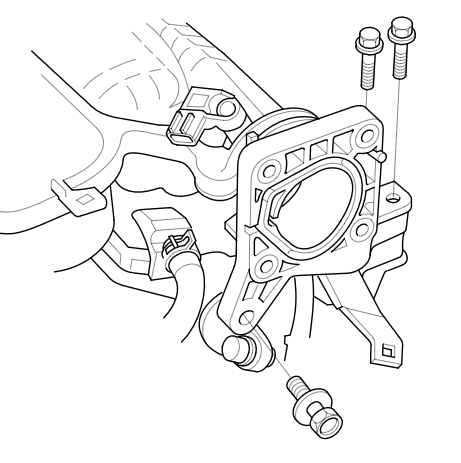
-
Remove the intake manifold chamber (A) and the intake manifold flange plate (B).
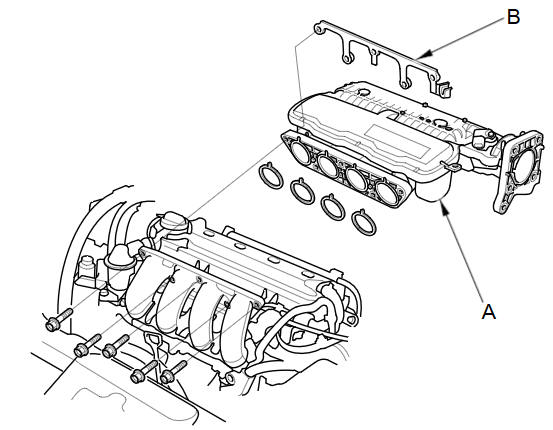
-
Disassemble the intake manifold chamber.
NOTE: Refer to the Exploded View if needed during this procedure.
Installation
-
Reassemble the intake manifold chamber.
NOTE: Refer to the Exploded View if needed during this procedure.
-
Install the intake manifold chamber (A) with new gaskets (B), and the intake manifold flange plate (C).
NOTE: Tighten the bolts in a crisscross pattern in three steps, beginning with the inner bolt.
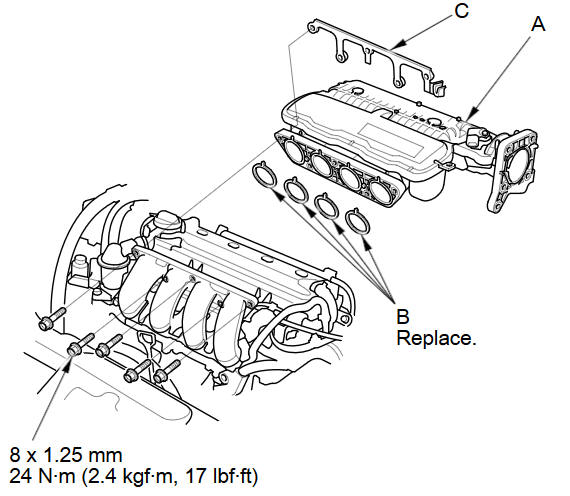
-
Loosen the intake manifold bracket mounting bolts (A, B), then loosely install the intake manifold bracket mounting bolts (C, D).
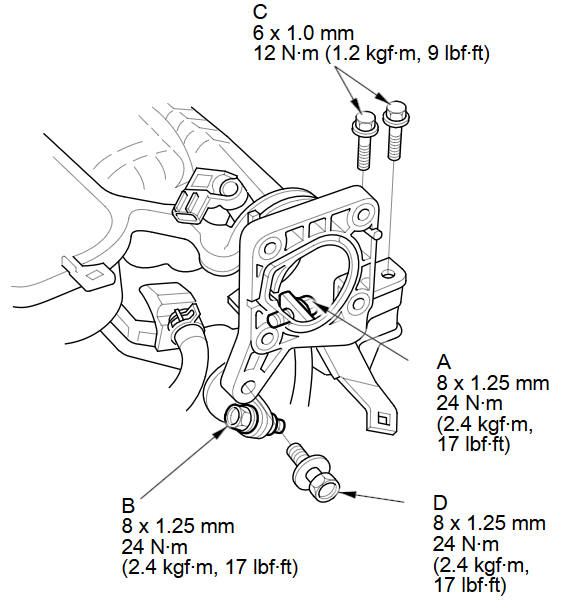
-
Tighten the intake manifold bracket mounting bolts in the numbered sequence shown.
-
Install the throttle body (A) with a new gasket (B), and the throttle flange plates (C).
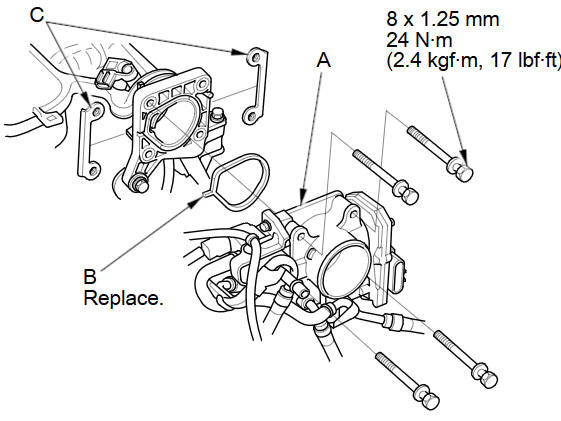
-
Install the water bypass hose (A) to the clamp (B).
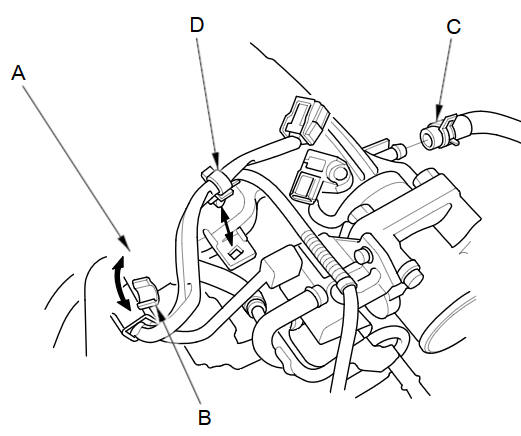
-
Connect the brake booster vacuum hose (C) and install the harness clamp (D).
-
Connect the engine wire harness connectors, and install the wire harness clamps to the intake manifold chamber:
-
Throttle actuator connector
-
MAP sensor connector
-
-
Install the air cleaner.
-
Install the under-cowl panel.
See also:
Driveshaft Removal
Special Tools Required
Ball Joint Remover, 28 mm 07MAC-SL0A202
Ball Joint Thread Protector, 14 mm 071AF-S3VA000
Raise and support the vehicle.
Remove the front wheel.
...
Rerouting
INFO button
► Setup ►Other
►Routing & Guidance
Set whether route recalculation occurs automatically or manually during route
guidance.
Select an option.
The following op ...
Address Book
DEST button
► Address Book
Select an address stored in your address book to use as the destination.
1. Select your user name.
2. Select your destination from the
list.
3. Set the rout ...
